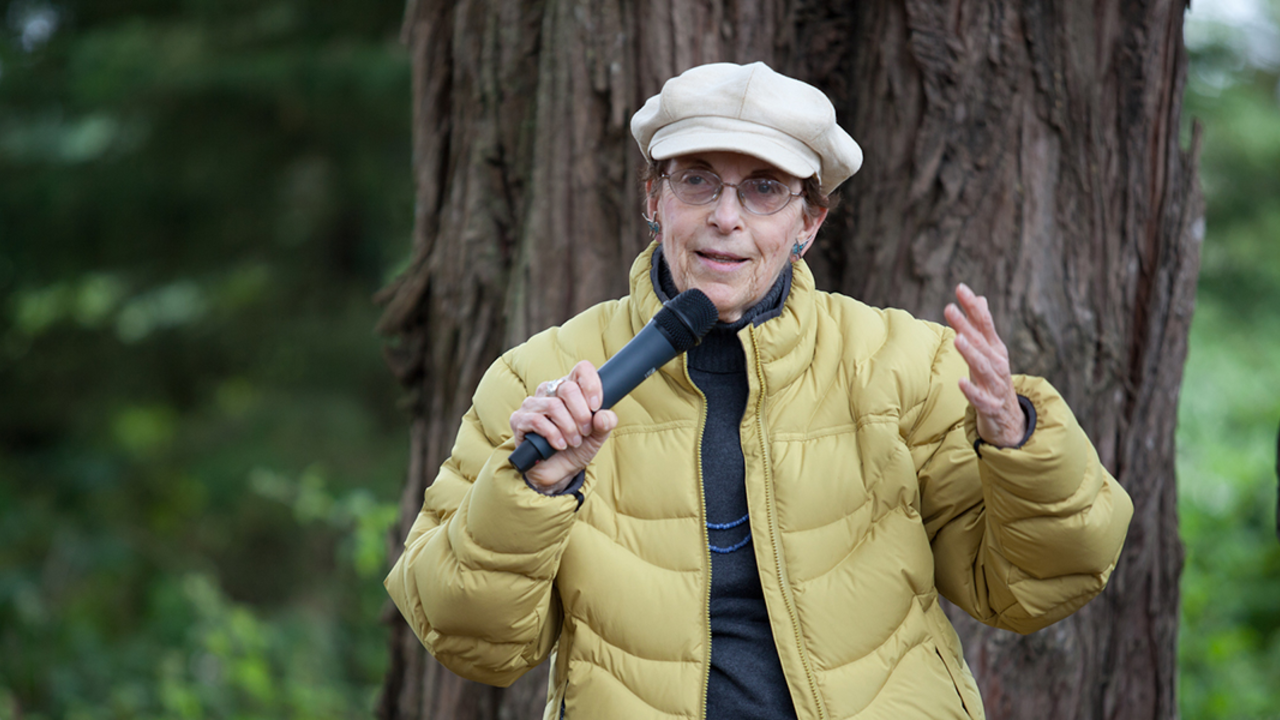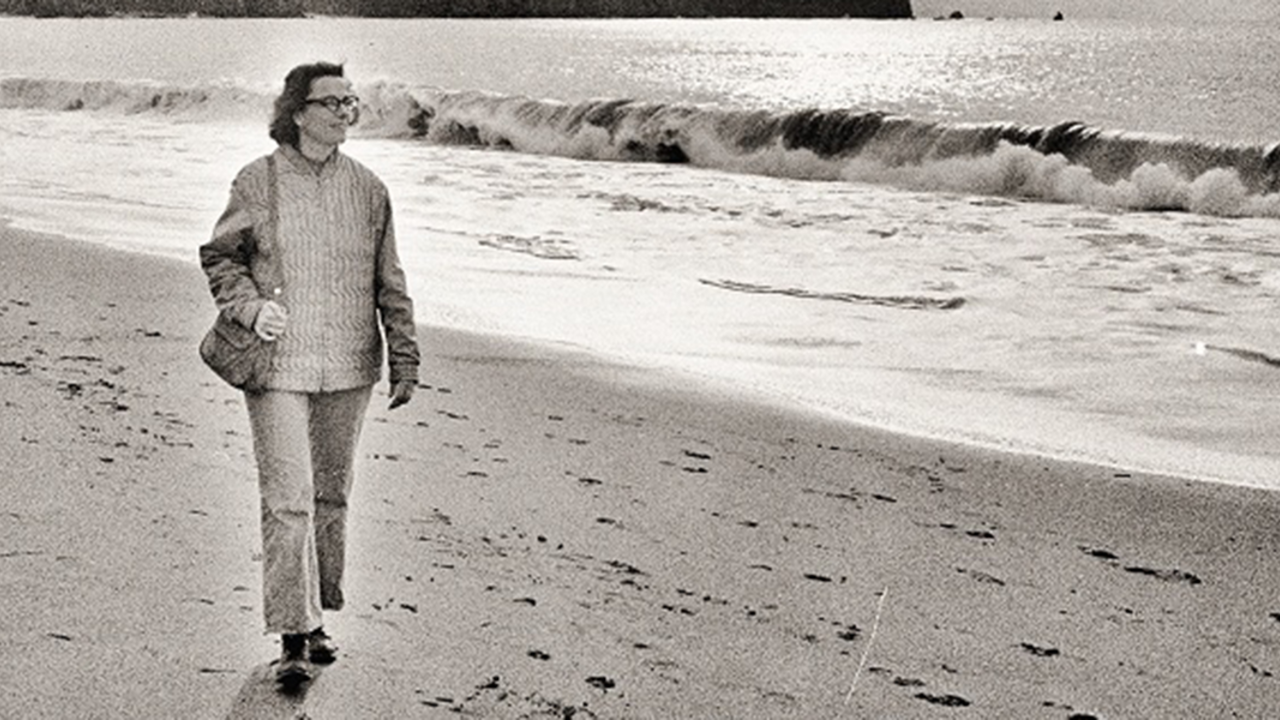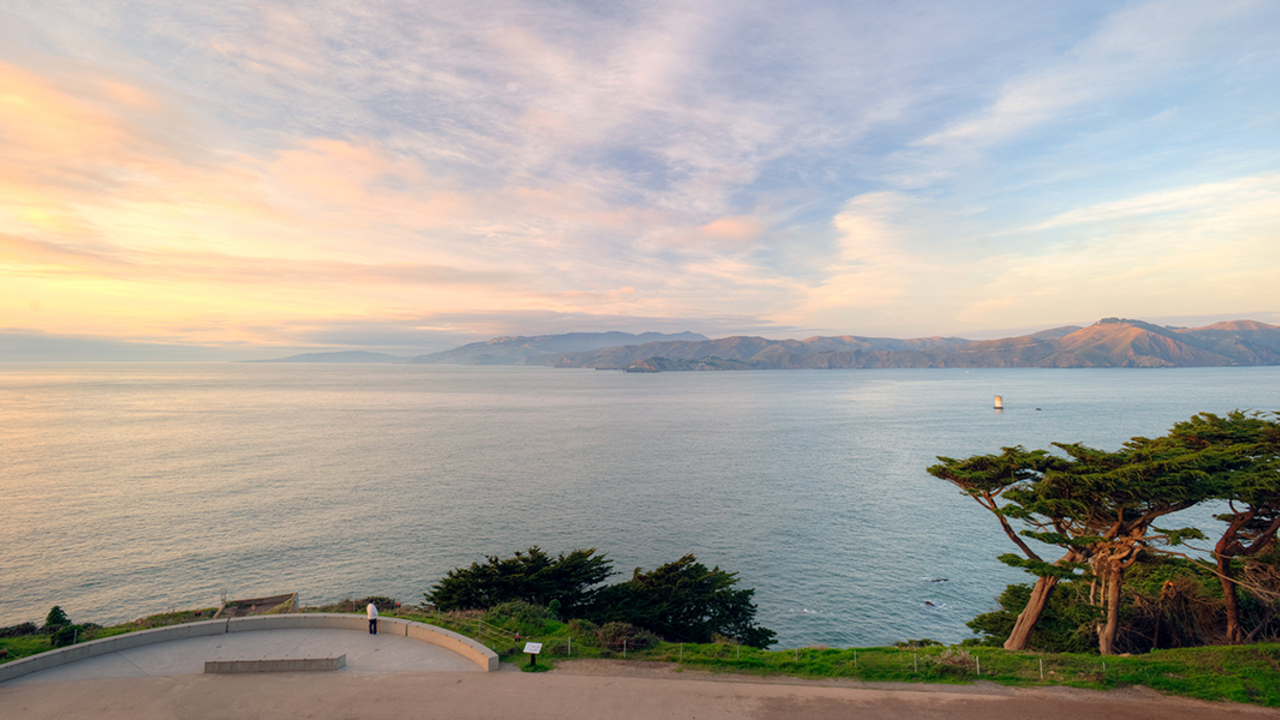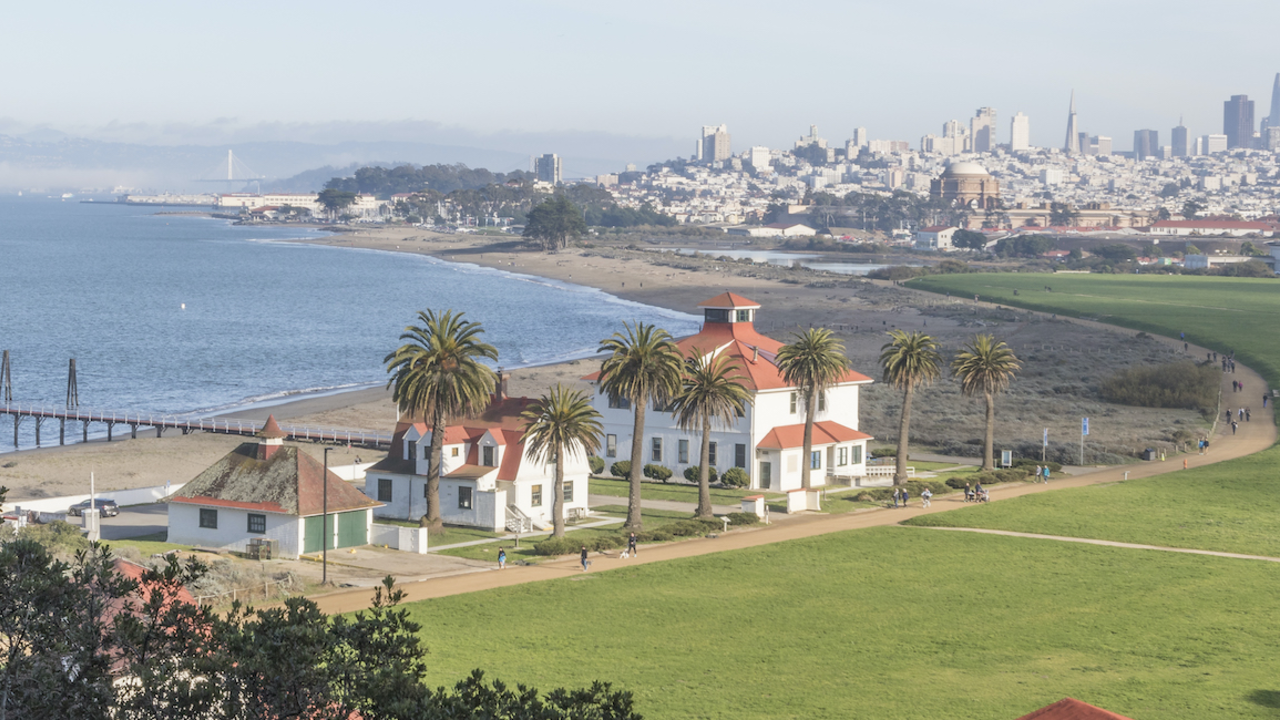Our Q&A with Amy Meyer, the ‘Mother of the GGNRA’

Maria Durana/Parks Conservancy
The fog was burning off at Lands End when Parks Conservancy staff sat with Amy Meyer, the "Mother of the GGNRA," in her nearby family home for an interview. Amy earned that nickname thanks to her instrumental role in the founding of the park.
Fifty years ago, Amy and former Sierra Club president Edgar Wayburn formed the “People For A Golden Gate National Recreation Area.” Amy’s kitchen served as their headquarters. It's where she called legislator's offices, gathered volunteers, and wrote letters on her typewriter to organizations around the country. The group was aiming to save 8,000 acres—at the time they had no idea that their efforts would lead to an almost 84,000-acre park that would become one of the most visited national parks in the country.
As we celebrate the 40th anniversary of the Parks Conservancy and the 50th anniversary of the GGNRA in late 2022, now is the perfect time to reflect on how the park started. Here’s our Q&A with Amy:
How did the idea for establishing a national park at the Golden Gate come to be?
In 1971, the Secretary of the Interior, Walter Hickel, said there are military lands that are excess to military needs that should be turned into national parks. We had the Presidio, three other forts and a city on one side of [the bridge] and on the other side Forts Baker, Barry and Cronkhite had minimal military buildings. One evening a couple of us walked over to Ed Wayburn's home. He was stunned that this had come up because he and Ansel Adams, the photographer, had been hoping to save the headlands of the Golden Gate.
Why did your effort to create a park gain such traction?
The stars were in alignment. People have been working here since the time of the gold rush to save and set aside land for parks. So what we did was take the pieces that had been put together over 100 years in San Francisco and Marin County and start connecting them. I think one of the important things about this project is that a lot of people were struck imaginatively with the idea that we could really have a national park at the Golden Gate. We started in the fall of 1970 and with huge help from SPUR (the San Francisco Planning and Urban Research Association) and the leadership of Congressmen Phillip Burton and William Mailliard, the legislation was signed Oct. 27, 1972.
Who helped you do this work in the early days?
One day a young woman rang my doorbell [hoping to help]. Her name was Mia Monroe. She became a right-hand person. She’s now a long-time employee of the National Park Service and the Marin Community Liaison for GGNRA. Becky Evans came in as a Sierra Club volunteer. John Jacobs of SPUR got us some seed money. Our treasurer knew an artist and she designed our stationary, very simple blue and green on white paper. After I had written a letter on legal paper I could go up and down the block here and find out who knew how to type.

What were your hopes for the parks when they were founded?
When you have a crystal and you put it in a proper solution, the crystal gradually grows. That's what we had. What happened surpassed our hopes or knowledge each step of the way. People here are engaged, want to contribute, and want to get involved with something that's bigger than themselves. That runs through this park like a trail.
What are the biggest differences you've noticed from 50 years ago?
Fifty years ago there weren’t many women [working in the park] and gradually there was a shift to women becoming employees in major positions. There's been a lot of cleaning up and restoration of species and habitats. The number of bees and butterflies in the Presidio now, for example, is simply incredible. One of the most important things is the amount of environmental education that has become possible.
Do you have a message for young people who want to get involved?
You can make a difference if you want to, if you care. You can get something done that will be special. It can be something that will be with you, as it’s been for me, your whole life. You are one representative of people power and the person next to you is another representative of people power. What you say and what you do has value.


